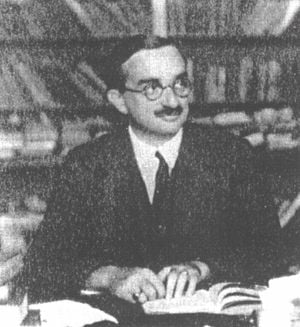Géza Róheim
By:
September 12, 2012

Of all of Freud’s disciples, none traveled further, or into stranger territory, to confirm their master’s teachings than GÉZA RÓHEIM (1891–1953), the first anthropologist to test psychoanalytic theories in the field. Born into a wealthy merchant family in Budapest, by seventeen Róheim was delivering lectures on lunar mythology; and at twenty-four, he entered analysis with Sandor Ferenczi in the company of Melanie Klein. The decisive moment in Róheim’s career came a few years later, when Malinowski challenged the universality of Freud’s theories, claiming that the Trobriand Islanders had no Oedipal Complex and that their children didn’t go through an anal-erotic phase. (Told this, Freud exclaimed, “What! Don’t those people have an anus?” and dispatched Róheim to investigate.) Róheim and his wife visited East Africa, the D’Entrecasteaux Islands, and Arizona. He spent months doing fieldwork with the Pitjantjatjara in central Australia, returning to Europe with material for a half dozen books, including The Panic of the Gods and Gates of the Dream. In his essays, peasants mingle with dragons, witches enchant milk cows, thieves freeze their victims with candles made from the fat of unborn babes and cannibals confess their dreams. He was one of the last of a breed of Central European polymaths who sought a key to all mythologies: like Aby Warburg, he tracked the imprint of the irrational across human cultures, and like Bernard Rudofsky, he found beauty in unknown vernaculars. Little understood in his own lifetime and now almost totally forgotten, Róheim’s work remains one of the weirdest and most stimulating fruits on the Freudian tree.
***
On his or her birthday, HiLobrow irregularly pays tribute to one of our high-, low-, no-, or hilobrow heroes. Also born this date: George Jones and Stanislaw Lem.
READ MORE about members of the Modernist Generation (1884–93).
